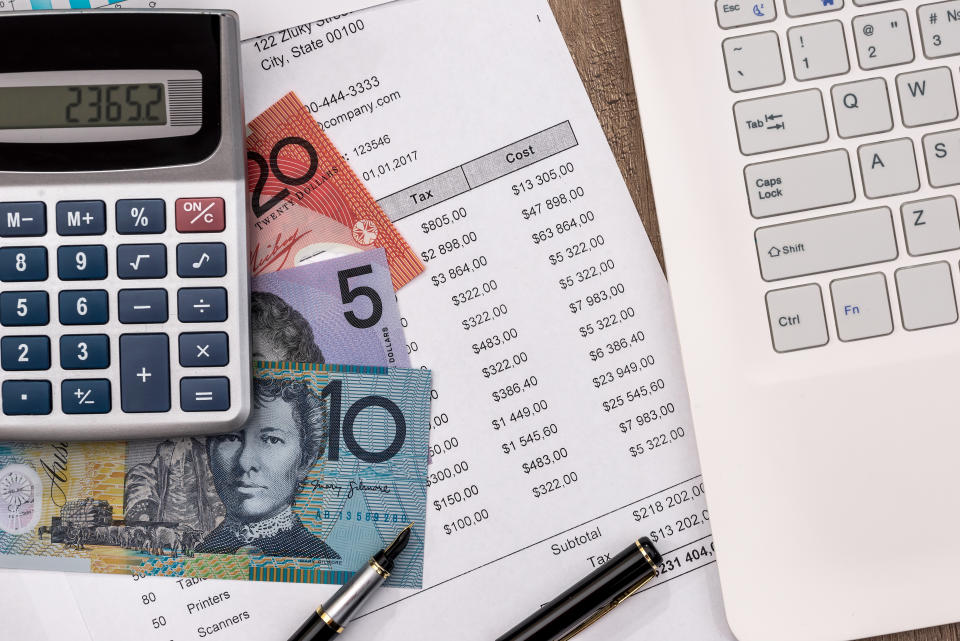Working from home amid the coronavirus – what are the tax implications?

There may only be just over 100 confirmed cases of the coronavirus here in Australia at the moment but the number of cases is expected to climb significantly in the coming weeks.
Productivity: How to structure your working from home time
UPDATING: All the Aussie companies telling staff to work from home
Remote work: How to not go crazy while working from quarantine
Already, many employers are activating emergency plans to keep the business open whilst protecting staff and a key component of that is to encourage – or even mandate – staff to work from home for an extended period.
However, working from home comes with its own challenges, not least the additional costs that it imposes on employees.
Think about it; increased utility bills, increased use of your personal mobile phone and home internet and even increased expenses on keeping your home working area clean and tidy are just some of the additional costs that many will face as they respond to the challenge of home working.
So, is it possible to claim a tax deduction for any of these extra costs? Happily, the answer is yes.
What can you claim?

If you work from home, you can claim include the work-related proportions of household costs such as:
Heating, cooling and lighting bills
Costs of cleaning your home working area
Depreciation of home office furniture and fittings
Depreciation of office equipment and computers
Costs of repairing home office equipment, furniture and furnishings
Small capital items such as furniture and computer equipment costing less than $300 can be written off in full immediately (they don’t need to be depreciated)
Computer consumables (like printer ink) and stationery
Phone (mobile and/or landline) and internet expenses
You might think that you can claim a percentage of rent or the interest on a mortgage if you’re working from home using a home office. Sadly, this isn’t allowable!
Ideally, you should have a specific room set aside as a home office. If you are using a room with a dual purpose (e.g. dining room), or a room shared with others (e.g. lounge room) you can only claim the expenses for the hours you had exclusive use of the area.
So, how do you make your claim?

There are two methods:
Diary method/actual running expenses
Keep a diary to work out how much of your household running expenses relate to doing work in your home office.
The diary needs to detail the time you spend in the home office compared with other users of the home office. Keep your diary record for a representative four-week period.
The ‘work-use proportion’ you come up with over that four-week period can then be applied to all your actual expenditure over the course of the year.
Of the two methods this usually produces the larger deduction but the record-keeping requirements are more stringent.
It may well be that you are already work from home from time to time but that the amount of home-working will spike over the next few weeks or months.
If that’s the case, keep a separate diary for the period of your “corona-induced” home working to justify the larger claim over this period – and don’t try to apply this larger work-related proportion to the whole year!
ATO rate per hour method
Alternatively, you can use a fixed rate of 52 cents per hour for home office expenses for heating, cooling, lighting and the decline in value of furniture instead of keeping details of actual costs.
You just need to keep a record of the number of hours you use the home office and multiply that by 52 cents per hour.
In addition to claiming 52 cents per hour, you can also make a separate claim for:
phone and internet expenses
computer consumables and stationery
depreciation of computers or other equipment.
Finally, a word of warning: It is quite common for people to have insufficient documentation to support a home office claim, particularly around the proportionate split between business use and personal use so be sure to keep records
Make your money work with Yahoo Finance’s daily newsletter. Sign up here and stay on top of the latest money, news and tech news.
Follow Yahoo Finance Australia on Facebook, Twitter, Instagram and LinkedIn.

 Yahoo Finance
Yahoo Finance 